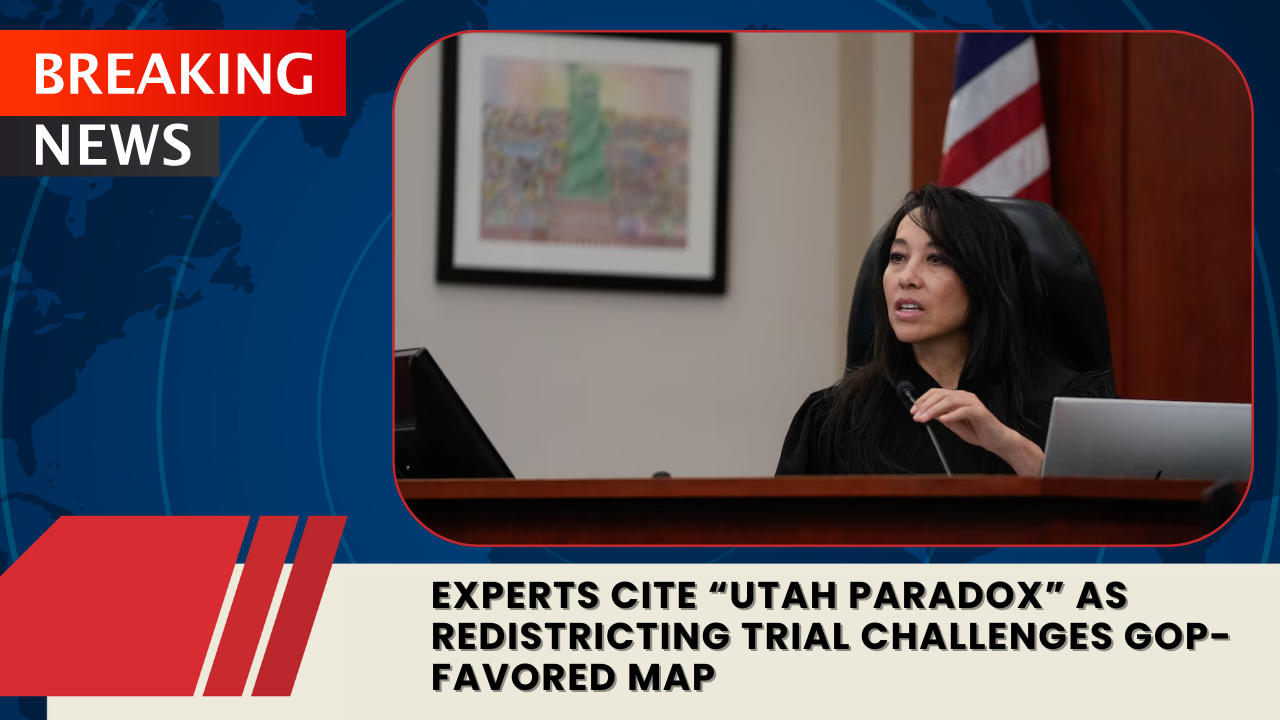SALT LAKE CITY — The courtroom battle over Utah’s congressional district maps entered a critical phase Thursday as political scientists and local residents testified before 3rd District Judge Dianna Gibson, arguing that the Legislature’s redistricting plan gives the Republican Party an unfair advantage.
At the heart of the debate is what experts are calling the “Utah paradox” — a statistical phenomenon that makes traditional partisan fairness tests unreliable in overwhelmingly one-party states like Utah. Plaintiffs claim this loophole has been used to justify a map that “cracks” Democratic voters across four Republican-leaning districts.
Expert Calls GOP-Drawn Map an “Extreme Outlier”
University of Michigan political scientist Jowei Chen, one of the plaintiffs’ expert witnesses, testified that his computer algorithm produced 10,000 potential district maps, and over 99% of them resulted in at least one Democratic-leaning district. Only six maps — including the Legislature’s — created a 4–0 Republican sweep, making it, in Chen’s words, “an extreme partisan outlier.”
Chen argued that the adopted map violates the Better Boundaries initiative (Proposition 4), which Utah voters passed in 2018 to promote fair redistricting. “The Legislature’s map divides communities unnecessarily,” Chen said, noting that it splits more counties than required and lacks compactness, both of which can tilt results toward one party.
The “Utah Paradox” Explained
Following Chen, Chris Warshaw, a Georgetown University political scientist, testified that Utah’s dominance by one political party renders common anti-gerrymandering metrics misleading.
“The partisan bias test adopted by Utah lawmakers fails in states without competitive elections,” Warshaw said. “It can incorrectly flag Democratic-leaning maps as biased, while Republican-dominated ones pass — a situation we call the Utah paradox.”
He added that the mean-median test, another tool used by the Legislature to claim fairness, also breaks down in Utah because Democrats are realistically competitive in only one of four districts.
Plaintiffs Describe Impact on Voters
Among those testifying were Malcolm and Victoria Reid, residents of Millcreek and plaintiffs in the lawsuit. They said the new boundaries have diluted their community’s political voice.
“I want to feel like our voices matter, not just locally but federally,” Malcolm Reid told the court. “When they carved up our city, they carved up our representation.”
Millcreek, previously divided into four districts, is now split between two — a change residents say still fragments their influence.
Competing Arguments on Redistricting Criteria
Attorneys for the Legislature argued that preserving “communities of interest” such as school districts and counties was considered, but must be balanced with equal population requirements and other redistricting principles.
Their attorney, Soren Geiger, cross-examined Chen about his use of algorithms, suggesting his computer models were not transparent. Chen defended his process, saying his code was shared, peer-reviewed, and accepted in other courts.
Meanwhile, Kassra Oskooii, a University of Delaware professor, testified that small modifications to the plaintiffs’ proposed maps could improve community continuity, such as keeping Millcreek whole and reducing unnecessary splits.
What’s Next in the Case
Judge Gibson is expected to continue hearing testimony Friday before determining whether the Legislature’s map complies with Proposition 4’s fairness standards. A final ruling must be issued by November 10, allowing election officials enough time to prepare for the 2026 congressional midterms.
The case is being closely watched across the country as a potential precedent for how courts in politically lopsided states interpret fairness in redistricting.



